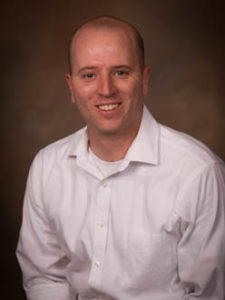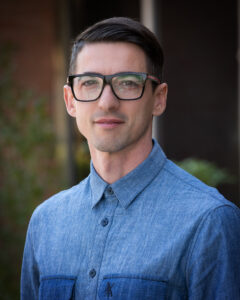Biomechanical Engineering Research and education in the U’s Department of Mechanical Engineering is applying mechanics to biological systems, including the study of how the human body responds to the application of force. Core strengths include biomaterials, bionics, medical device design, microfluidics and structure of injury and disease.
Faculty and Labs
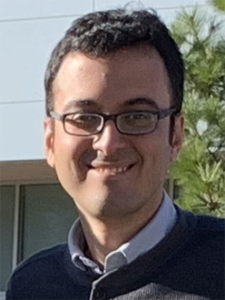
Amir Arzani
Lab: Computational Biomechanics Group
Our group does computational mechanics research with various applications but with an emphasis on cardiovascular disease. Research Interests include: computational fluid dynamics (CFD), nonlinear solid mechanics (growth & remodeling), scientific machine learning (sparse data-driven modeling and physics-informed deep learning), mass transport, dynamical systems, flow physics and transport in chaotic flows with different applications (biological flows, environmental flows, and heat transfer)
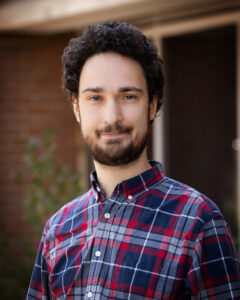
Edoardo Battaglia
Lab – Human-Centered Haptics And Robotics
We focus on the design and evaluation of robotic and mechatronic systems for human-focused applications, such as sensing of kinematic and interaction forces, haptic feedback and training and assistive tasks. Our vision is to create devices that will be functional not just from an engineering point of view, but also from a user-centered perspective, with the goal of creating technology that will be intuitive to use, and as unobtrusive as possible. We target applications in high-impact settings such as medical care and diagnosis, training and virtual/augmented reality.

Brittany Coats
Lab: Utah Head Trauma Lab
Explores the microscopic and macroscopic structure of the head and eye at different stages of development. We use principals of engineering to characterize the biomechanical response of these structures to injury and disease. This helps us understand the initiation of injury and disease, but also allow us to design and implement accurate and complex computer models that can accelerate the development of age-appropriate injury prevention, diagnosis and treatment strategies for traumatic brain and ocular injury.
Elham (Emma) Davoodi
Lab: Davoodi Lab
With a vision to bridge the gap between manufacturing and biomedicine, we are pushing the boundaries of biomaterials and biofabrication. By developing cutting-edge ex vivo, in situ, and in vivo biomanufacturing strategies, we are unlocking new possibilities for biomedical applications. From innovative bioinks and structural designs to advanced 3D printing techniques, our work is striving to create new solutions for tissue regeneration, drug delivery, and bioelectronics, aiming to bring these technologies closer to real-world impact.
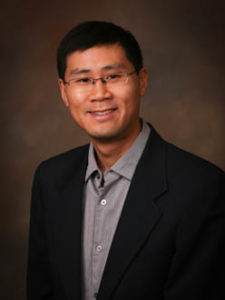
Henry Fu
Lab: Fluids and Biomechanics
Studies complex biomaterials and low-Reynolds number hydrodynamics, including the solid and fluid mechanics of swimming microorganisms and microengineered systems. Specific research projects involve swimming hydrodynamics in Newtonian and non-Newtonian biological fluids and gels, microrheology in gels, swimming hydrodynamics in shear flows, the behavior of chiral particles in shear flows, with application to chiral separation, microrobotic swimming, with application to drug delivery and microtransport and assembly, and flagella-based materials for bioenabled sensing and actuation.
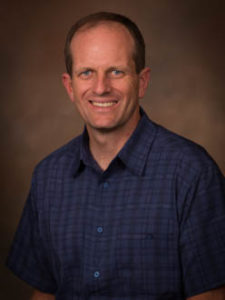
Bruce Gale
Lab: Utah Center of Excellence for Biomedical Microfluidics
Works to discover, understand, develop and commercialize microfluidic components and systems directed towards improving human health while generating knowledge, educating students, and creating economic development opportunities. We regularly partner with leading industrial, academic, and government institutions in developing microfluidic solutions to challenging biomedical problems.

Laura Hallock
Lab: Human-Robot Empowerment Lab (HRELab)
In the HRELab, we work to build more effective assistive and rehabilitative robots. Our current projects focus on improving independence after neurological injury by making rehabilitation more engaging and assistive devices easier to control. Our research leverages multiple sensing modalities (including ultrasound, surface electromyography, and motion capture) to better evaluate human capability and intent, enabling safer, more intuitive, and more personalized physical human–robot interactions.

Jungkyu (Jay) Kim
Lab: Biomedical Micro/Nano Systems
Focuses on developing transnational biomedical platforms for microfluidic automation, chemical and biomolecule detection, and biomimetic tissue engineering by using micro- and nanotechnologies. For microfluidic automation, a universal fluid processor using microvalve array and novel digital microfluidics which enable the automation of the basic fluidic operations to achieve totally automated assays. For chemical and biomolecule detection, we are utilizing capillary electrophoresis, impedance sensors, electrochemical sensors, and optical sensors as well as a novel paper microfluidic platform for rapid and portable medical diagnostics and environmental monitoring.
Owen Kingstedt
Lab – High Strain-Rate Mechanics of Materials
Focuses on the study of the deformation and failure processes that take place in materials under extreme conditions. Current conditions of interest are high strain-rate loading and high temperature environments. Advanced diagnostic techniques are paired with existing experimental techniques to gain insight of deformation processes across multiple length scales.
Tommaso Lenzi
Lab – HGN Lab for Bionic Engineering
Focuses on the intersection of Robotics, Design, Control, and Biomechanics. We invent, prototype, engineer, and test bionic devices and systems to help people move and live independently.

Ken Monson
Lab – Head Injury & Vessel Biomechanics
Our research focuses on the response of blood vessels to deformation, or change in shape. While most vessels regularly experience small deformations, large deformations alter the microstructural constituents of the vessel wall and their relationships with each other. This damage changes the ability of the vessel to perform its function. Our work aims to better characterize damage-induced changes in vessel behavior and to implement these findings into models that can be used to predict injury and dysfunction. Traumatic brain injury serves as a primary motivator for our research since cerebral vessels are commonly deformed and injured during trauma, but medical procedures like balloon angioplasty also produce vessel deformation and may be refined through deeper understanding of vessel deformation and injury.
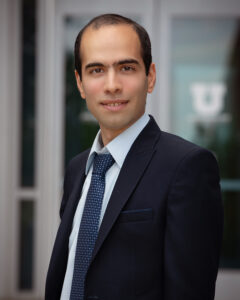
Hossein Montazerian
Lab – The Laboratory of Biomaterials for Minimally Invasive Technologies
We push the boundaries of minimally invasive therapies by engineering innovative, soft-yet-strong biomaterials like tough hydrogels. Our work merges bioelectronics with hydrogel-based implantable and wearable devices, unlocking new possibilities for seamless integration with the body. By harnessing cutting-edge micro- and nanotechnologies, we strive to revolutionize treatment strategies and reduce the need for invasive surgeries.
Steven Naleway
Lab – Bioinspired Science and Engineering
Research interests are in the areas of bioinspired design, biological material science, and biomedical materials. Research is ongoing to understand the common structural design elements that are employed by nature to provide impressive mechanical properties and to employ these through a variety of additive and advanced manufacturing techniques.

Erika Pliner
Lab – Neuroergonomics & Occupational Biomechanics Laboratory
We focus our core competencies on biomechanics, neuroscience, and ergonomics to improve personal and occupational safety. We design experiments that leverage wearable systems to characterize the complexity of human-environment interactions. This knowledge is applied towards interventions for safe and effective activity.

Samira Shiri
Lab – Shiri Lab: Interfacial & Transport Physics
Research interests are in the areas of High throughput experiments and data analysis, underlying physics of active matter, bioinspired materials and mechanisms, and Biophysics: forensic science.
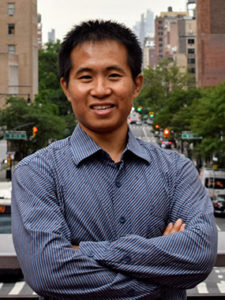
Haohan Zhang
Lab – Utah Wearable Robotics Laboratory
We specialize in wearable robotic solutions by leveraging mechanism design and modern computational methods. We strive to understand the sensorimotor system through experiments using wearable robotic platforms. Our laboratory aspires to make a positive impact on daily living of individuals with motor impairments through increased independence and social belonging.
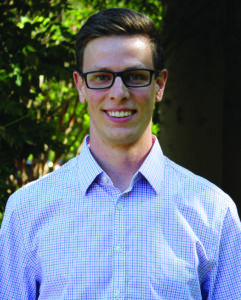
Scott Uhlrich
Lab – Movement Bioengineering Lab
We design wearable devices and mobile sensing algorithms that improve human mobility through the integration of biomechanics, machine learning, computer vision, wearables, and robotics. Applications include screening for injury risk using smartphone video, reducing joint pain from osteoarthritis using wearables, and creating video-based biomarkers of movement health for neuromuscular diseases.

